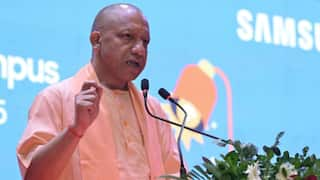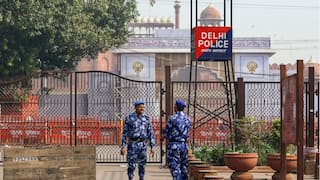(Source: ABPLIVE पत्रकारों का Exit Poll)
Chandrayaan-3’s Pragyan Rover Rotates Itself To Find A Safe Route On Moon. WATCH
Chandrayaan-3’s Pragyan rover rotated itself on the Moon on August 29, 2023, in search of a safe route.

Chandrayaan-3’s Pragyan rover rotated itself on the Moon on August 29, 2023, in search of a safe route. The Lander Imager Camera recorded Pragyan rover’s rotation on the lunar surface. This is not the first time Pragyan changed its route on the Moon, in search of a safe path. On August 27, Pragyan reached a huge crater with a diameter of four metres. This crater was three metres ahead of Pragyan’s previous location. After a command to retrace its path, Pragyan started heading safely on a new path.
The Indian Space Research Organisation (ISRO) has shared a video of Pragyan rotating itself to reach a safe path. The Indian space agency wrote on X: “It feels as though a child is playfully frolicking in the yards of Chandamama, while the mother watches affectionately.”
Chandrayaan-3 Mission:
— ISRO (@isro) August 31, 2023
The rover was rotated in search of a safe route. The rotation was captured by a Lander Imager Camera.
It feels as though a child is playfully frolicking in the yards of Chandamama, while the mother watches affectionately.
Isn't it?🙂 pic.twitter.com/w5FwFZzDMp
Pragyan successfully rolled out of the Vikram lander on August 23, about four hours after Chandrayaan-3’s historic soft landing on the Moon’s south pole.
Both the payloads onboard Pragyan have made groundbreaking discoveries less than a week since they started operations. The instruments have confirmed the presence of sulphur on the Moon’s south pole, along with other elements.
ALSO READ | Chandrayaan-3: Another Pragyan Rover Payload Confirms Presence Of Sulphur On Moon’s South Pole. WATCH
A Vikram lander payload has produced the first temperature-depth profile on the lunar surface on the south pole.
Chandrayaan-3 is expected to operate on the Moon till the first week of September.
About 10 days after Chandrayaan-3’s historic touchdown on the Moon, ISRO is launching Aditya-L1, India’s first space-based solar observatory to study the Sun. Aditya-L1 will be launched atop an XL-PSLV (Polar Satellite Launch Vehicle) rocket, from Satish Dhawan Space Centre, Sriharikota, on September 2, at 11:50 am IST.
Aditya-L1 will reach its destination, which is the Lagrange point 1 (L1), about four months after launch, and will perform scientific experiments for five years.







































